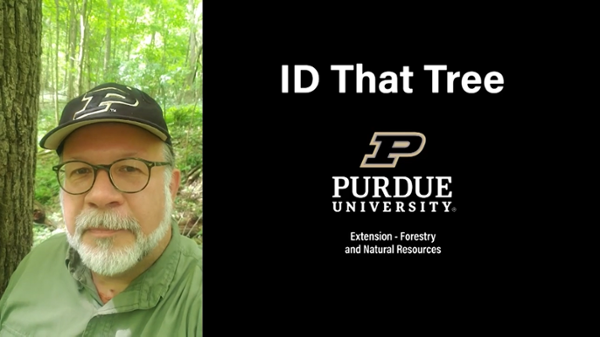Banner image: American hornbeam, a.k.a. Blue beech or Musclewood. Photo by John E. Woodmansee
Do you know all the trees in your yard? As leaves emerge from buds very soon, I’d challenge you to identify your trees this year. Proper identification of trees is important so we can select the best tree for a site (pre-planting), provide good growing conditions, and address any health issues with the tree by first knowing what tree we have (certain pests tend to attack certain types of trees).
For most novices in tree identification, the best method is probably through identification of leaves during the growing season. But even that identification method begins with other aspects of the tree.
One of the first things to look at is leaf arrangement, namely: opposite or alternate. Opposite arrangement means exactly what the name implies: at each leaf node, there is another leaf on the opposite side of the branch. The list of trees with oppositely-arranged leaves and branches is a much shorter list than their alternate counterparts. The most common suspects are ashes, maples, boxelder, Ohio buckeye, and flowering dogwood. We also include catalpa in that group, but it technically has a whorled arrangement (3 leaves per node arranged around the stem). Alternately-arranged leaves have one leaf at a node, then a little further up there’s another leaf on the other side of the branch.
The next thing to observe are the actual leaf characteristics.
First, is it a simple leaf (one leaf blade), or a compound leaf (many leaflets that comprise the overall leaf). Examples of trees with simple leaves are tuliptree (our state tree), oaks, eastern redbud, and maples (except boxelder, a maple sometimes called ash-leaf maple). Examples of compound leaves include black walnut, ashes, hickories, and butternut. There are also doubly-compound leaves with much more branching and many more leaflets. Doubly-compound leaves can be found on Kentucky coffeetree and honeylocust.
What does the margin (edge) of the leaf look like? Is it smooth (called “entire”), or does it have teeth or lobes. Teeth are serrations on the leaf edge that give it a look akin to a sawblade. Lobes are larger areas of the leaf that stick out from the center. On the tips, these lobes may have a rounded appearance, a pointed appearance, or some other variation. The space between lobes is called a sinus, and it can be somewhat shallow or deeply cut into the leaf.
Of course, if you have evergreens or conifers, it’s mostly about needle characteristics and cones. Do you have needles bound in a cluster, or individual needles? Pines have needles that are bound in clusters at their base, typically 2 or 5 needles per cluster. Spruces have square needles on small wooden stalks or pegs. Firs have flattened, flexible needles. Other possible evergreens with flat needles include yews and eastern hemlock. Conifers (cone-bearing trees) that lose their needles every year include bald cyprus and tamarack. Our most common native evergreen in Indiana is the eastern redcedar, which has scale-like leaves that overlap each other somewhat like fish scales. Their cones look kind of like a pale blueberry.
Finally, a good tree identification resource will help you.
One resource I would suggest you start with is Purdue Extension’s fairly new resource entitled, An Introduction to Trees of Indiana. This publication replaces the long-used 50 Trees of Indiana, and it has a few more trees in it. More experienced tree savants may wish to purchase one or both of the books by Purdue University Press: Native Trees of the Midwest, and Shrubs and Woody vines of Indiana and the Midwest.
One thing I really like about An Introduction to Trees of Indiana is the branching tree key. You start on the left side of the page and use descriptions to follow a path to the common Indiana tree you are trying to identify. Of course, if it’s not one of the more common trees of Indiana, you may have to consult another resource.
Alternatively, you may also have another of the many fine tree identification books or field guides available. I have most of them, and they all have their helpful features.
Professional foresters may rarely use leaves to identify trees, or they may only use them as one piece of the puzzle, because it’s only helpful when leaves are on the trees. In winter, that’s not particularly helpful. They will use other clues to identify trees, such as the site characteristics, bark, buds, growth form, leaf scars, twigs, fruit (if available) and other traits.
Find the Purdue resources mentioned above at www.edustore.purdue.edu. If you are more of a video-based learner, search for Lenny Farlee’s “ID That Tree” videos on Purdue Extension - Forestry and Natural Resources’ website or YouTube channel.

Above picture: Purdue Extension Forester, Lenny Farlee, from the opening segment of his "ID That Tree" videos